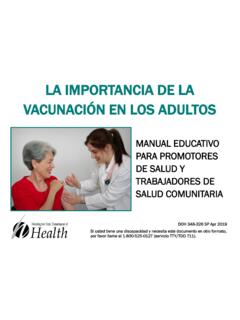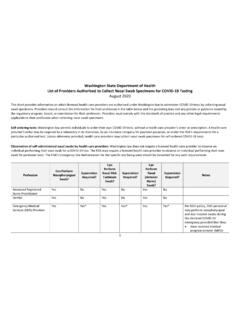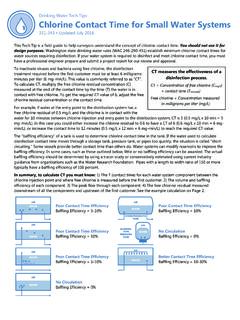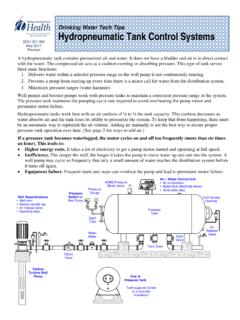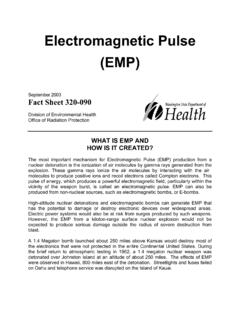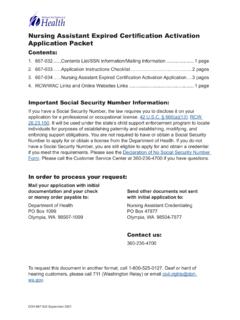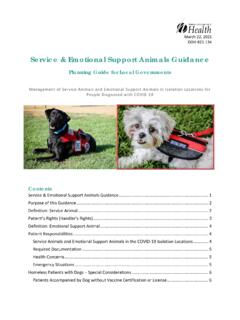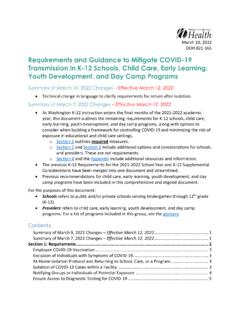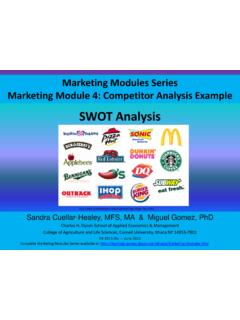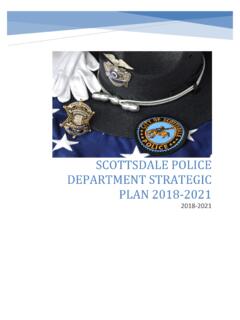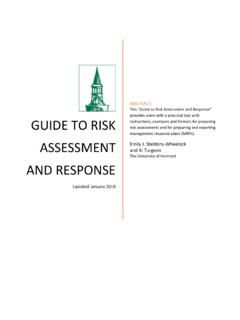Transcription of Conduct an Environmental Scan
1 Conduct an Environmental Scan An Environmental Scan is the identification and monitoring of factors from both inside and outside the organization that may impact the long-term viability of the organization. During this step you are essentially attempting to develop the big picture . Areas of Environmental Scan Description of Area SWOT Analysis In the SWOT, the organization utilizes the assessment of the following five categories to help determine the organization s strengths, weaknesses , opportunities and threats . Market Forces An assessment of competition the organization must face, including industry trends and competitive analysis.
2 Stakeholder Analysis The identification of stakeholders and delineation of their needs. Technology An internal and external assessment of technology to find opportunities for potential innovation. Internal Capability Analysis A detailed view of the internal workings of the organization, with a focus on resources, skills and process capabilities. Legal and Regulatory Factors A view of how the organization can favorably address legal and regulatory factors and minimize any threats by relevant legislation and regulation. A review of regulations that impact/guide your work prior to setting the strategic direction, federal laws, RCWs, and WACs, EnvironmentalAnalysis (Scan)Legal and Regulatory FactorsMarket ForcesStakeholder AnalysisTechnologySWOT AnalysisInternalCapabilityAnalysisSWOT What s SWOT?
3 A SWOT analysis is a quick way of examining an organization s process(es) by reviewing its (internal) strengths and weaknesses and matching these to its (external) opportunities and threats . Compiling this information together into one place enables you to see the bigger picture, identify all major factors affecting your organization s operations, and act as a decision-making aid to formulate an effective response strategy. Each organization will have its own specific SWOT profile. This process needs to be repeated frequently to reflect the ever-changing internal and external relationships. SWOT analysis is an effective method for identifying Strengths and weaknesses , and examining the opportunities and threats facing the organization.
4 Often carrying out an analysis using the SWOT framework reveals changes that can be useful. To carry out a SWOT Analysis, write down answers to the following questions: Strengths: o What are your advantages? o What processes are working well? Consider this from your own point of view and from the point of view of your customer. Don t be modest, be realistic. weaknesses : o What could be improved? o What was done poorly? o What should be avoided? o What didn t work? Again, this should be considered from an internal and external basis do other people perceive weaknesses that you don t see?
5 It is best to be realistic now, and face any unpleasant truths as soon as possible. opportunities : o What did you learn in order to be more effective in the future? o Are there ways to capitalize on your strengths? o What would you or can you do differently in the future? Useful opportunities can come from such things as: o Changes in technology and markets on both a broad and narrow scale o Changes in government policy related to your field o Changes in social patterns, population profiles, lifestyle changes, etc. o Local issues threats : o What are the barriers in responding to an event more efficiently the next time?
6 O What obstacles do you face? o Has your role or responsibility changed as a result of the event/incident? o What are the things that need to be done in preparation for the next time? Carrying out this analysis will often be illuminating both in terms of pointing out what needs to be done, and in putting problems into perspective. Your Strategic Advantages are the aspects of your organization that you do well and facilitate your success. They are also things that you will probably want to maintain, build on, or leverage. These are directly related to your identified Strengths from your SWOT analysis.
7 For Example: SWOT= Low Turnover, Family atmosphere, Committed Staff Advantage= Employee Satisfaction List your Strategic Advantage statements along with the corresponding SWOT items. Your Strategic Challenges are the aspects of your organization that you may need to improve or overcome. They are also things that you will likely want to prioritize, optimize, fix or remove. These are directly related to your identified weaknesses and threats from your SWOT analysis. List your Strategic Challenges.
